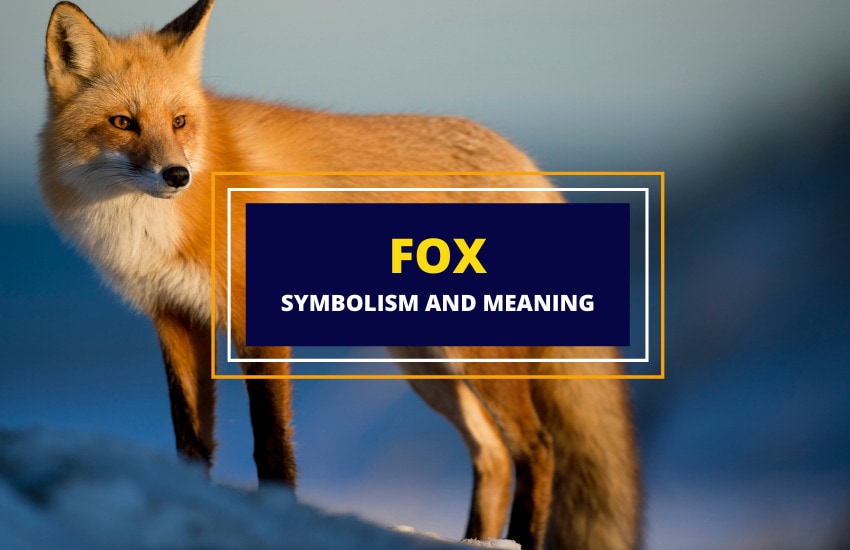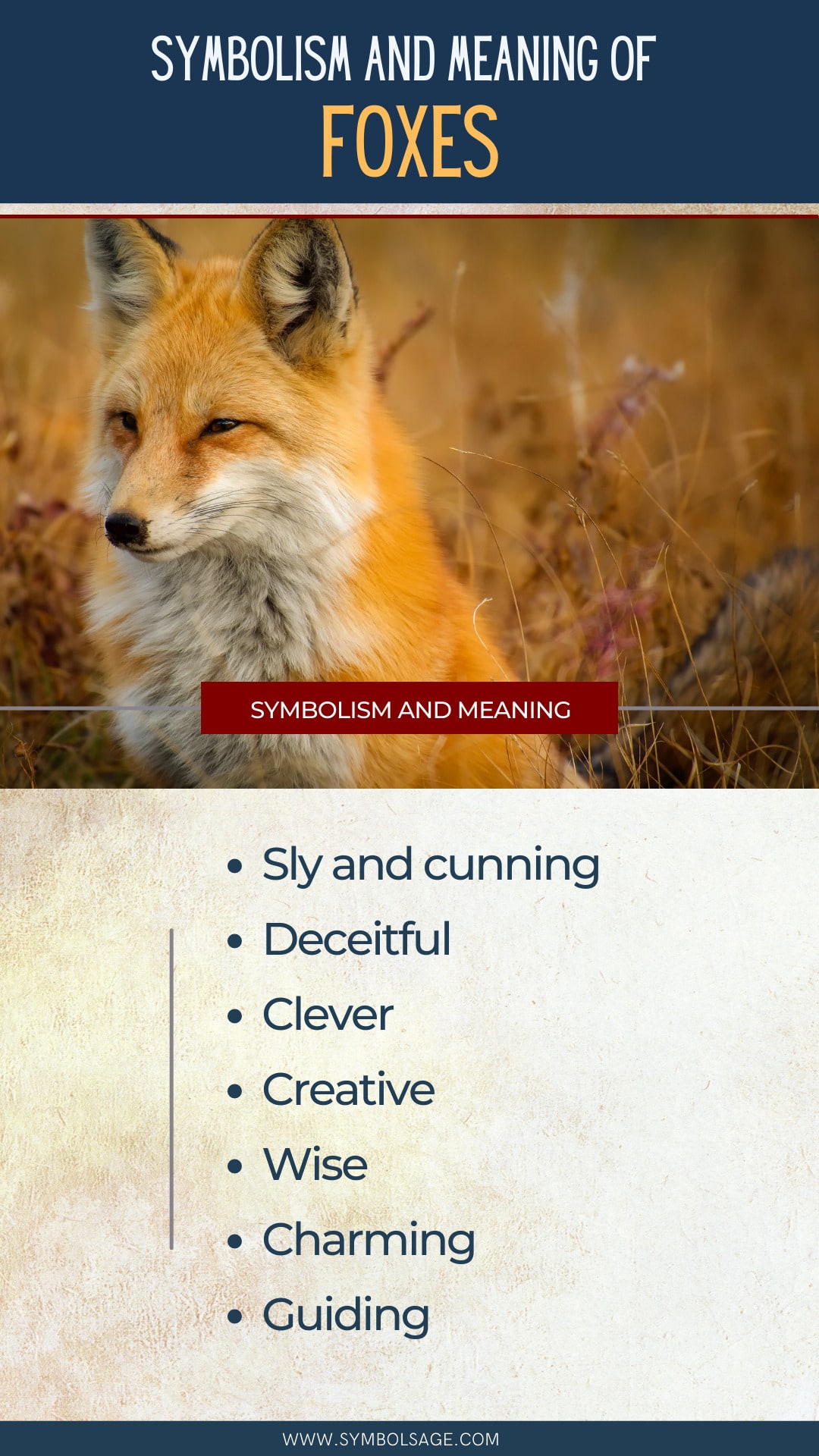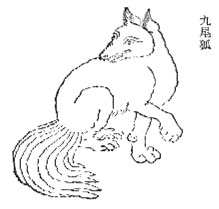
Table of Contents
Foxes are commonly represented in media and popular culture as sly, cunning, and deceitful. This is because foxes in the wild are known to be wily and sneaky, always stealing and grabbing food from other, less wary animals.
As a matter of fact, the term fox has been recorded in the English dictionary as a noun (a clever or cunning person), a verb (to deceive), and even an adjective (foxy: seductive).
But what is lesser known to many is that there are actual different representations of the fox all over the world. In some ancient cultures, the fox is even depicted as a sacred animal of the gods, a powerful spirit warrior, and even a wise and benevolent creator god.
Symbolism of Foxes

Foxes symbolize both positive and negative aspects. In general, they represent:
- Cunning: Foxes are considered to be cunning because of their ability to outwit and evade hunters and hunting dogs. In many folk tales, they’re depicted as animals who trick others for their own benefit – think tales like Chicken Licken or The Gingerbread Man.
- Clever: To be as clever as a fox is indeed a compliment. Foxes are intelligent animals, who are able to find food, survive in harsh weather, and to protect their young.
- Independent: Unlike wolves, who work in packs, foxes live solitary lives. They hunt and sleep by themselves, without relying on other members of their kind.
- Playful: Foxes love to play, and often play with other foxes or with objects. This has given them the reputation of being mischievous, fun loving, and sometimes silly.
The Spiritual Meaning of Foxes
In folklore and popular fables, the fox as an animal is commonly described as very smart and vigilant, while also being arrogant and deceitful. However, the spiritual meaning of the fox is ambition and fairness.
As a Spirit Guide, it reminds us of upcoming disturbances in our routines or potential disruptions in our lives, thus enabling us to prepare ourselves and take the best course of action when it happens.
Fox Symbolism in Dreams
While foxes do not often appear in dreams, it is believed that such occurrence hints at the possibility that you are in danger from someone close to you.
Because foxes are known to be scheming, its appearance in your thoughts while you are sleeping could be your subconscious trying to let you know that someone around you is lying, cheating, or trying to take advantage of you.
The Fox as A Spirit Animal
Having the fox as a spirit animal does not mean that you are cunning and deceitful. Though these are traits common to foxes, it does not necessarily translate to humans, as we have the ability to discern and properly judge a situation.
Instead, as you manifest the fox spirit, you exhibit the positive counterpart of the wiliness of the fox, and that is wisdom. There is also the ability to quickly adapt and blend in any situation, make prompt decisions, and act as needed. You are not impulsive and are always cautious, making sure to consider all possibilities before taking action, and always leaving yourself a path for escape when needed.
Fox Totem of Native Americans
Different tribes have different myths and stories about the fox spirit animal, but a recurring theme in many cultures talks about the fox as a kindhearted spirit that leads people towards the right path.
The fox totem is also believed to represent resilience and the ability to keep on going even when times are tough.
The 9-Tailed Fox of Eastern Cultures
One of the more popular representations of this animal is the Nine-Tailed Fox, as it is known in several Asian countries, including Korea, China, Japan, and Vietnam.
Legend says that the Nine-Tailed Fox is an ancient creature that has lived for hundreds of years.
However, compared to other mythological creatures, the Nine-Tailed Fox is believed to have been born as an ordinary fox. It is only after living for such a long time that they eventually developed their magical powers and grew their nine tails. At the height of its power, the Nine-Tailed Fox is able to transform itself into a human, most of the time as a young beautiful girl.
This story has circulated among many countries in Asia and told in different versions, each country with their own story and folklore about this mythical creature–the Huli Jing in China, Gumiho in South Korea, Kitsune in Japan, and Hồ tinh in Vietnam are just of the more commonly known ones.
Huli Jing In China

The Nine-Tailed fox has made many appearances in Chinese literature under the name of Huli jing, a common term used by the Chinese to refer to shape shifters.
Excerpts from the Shanhaijing, or the Classic of Mountains and Seas, from 4th to 1st century BC initially mention the Huli jing a symbol of luck and harmony. In the latter part of the literature, the narrative was changed and the Huli jing was then painted as an evil creature that tricked humans, eating them to stay alive.
This belief was carried for many generations, until the emergence of the Tang Dynasty in China. It was during this time that the Huli jing was revered, as people began worshiping fox spirits. The people laid offerings to the Huli jing, wishing for prosperity and peace.
When the Song Dynasty arrived, however, this reverence was reversed, where fox worship was labeled as cult behavior and the practice was forbidden.
Gumiho In Korea
In Korea, the Nine-Tailed Fox is referred to as the Gumiho and has many similar characteristics as China’s Huli Jing.
One notable difference is that while the Chinese Nine-Tailed Fox could be sometimes good or bad, the Korean folklore is clear and consistent in labeling the Gumiho as plain evil.
Some stories even describe the Gumiho as a demon that lurks in graves to dig out bodies and eat the liver and the heart of the deceased.
Kitsune In Japan
As the Japanese version of the Nine-Tailed Fox, the Kitsune is quite different from its neighbors in China and Korea. They are portrayed in Japanese folklore as loyal friend and lover, protecting humans from evil spirits.
The Kitsune also has a revered existence as they are believed to be related to the Japanese gods, particularly Inari, the Japanese god of prosperity. With this halo of the supernatural surrounding them, the Kitsune was revered and treated almost like the gods, receiving offerings from the people who asked for its protection.
Hồ Tinh In Vietnam
The story of Vietnam’s Hồ tinh is a legend that has been tied with the famous West Lake of Hanoi. It is said that the Hồ tinh used to attack villages and bring them to a mountain to feed on them, until one day when a warrior named Lạc Long Quân led his army to kill it. A lake was built around its lair, and that became what is now known as the West Lake of Hanoi.
Fox Symbolism in The West
Compared to the multitude of complex stories about foxes and fox spirits in Asian countries, the West has very brief impressions about the fox symbolism in their local folklore and mythology.
The fox is described in Finnish mythology as fundamentally good while exhibiting its cunning nature when needed. It can win fights against bigger and smarter opponents like the fierce wolf and the powerful bear through tricking his way out of the situation.
In Peru, the Moche who worshipped animals, depicts the fox as a smart fighter who prefers to use his brain, and not his muscles, to win fights. On the other hand, the Dogon people of West Africa depicts the fox as the playful god of the desert and as an embodiment of chaos.
A myth from the Blackfoot and Apache tribes also tells the story of how the fox stole fire from the gods to give to people, while some tribes in Northern California believes the fox to be an intelligent and compassionate creator god. On the contrary, for the Quechua and other Andean Indians, the fox is often depicted as a bad omen.
Summary
While different cultures perceive the fox and the fox spirit differently, their deceitful and cunning reputation follows them in many parts of the world. However, they also have their good traits, and that is their ability to plan ahead while capitalizing on their strengths and reinforcing their weaknesses.








